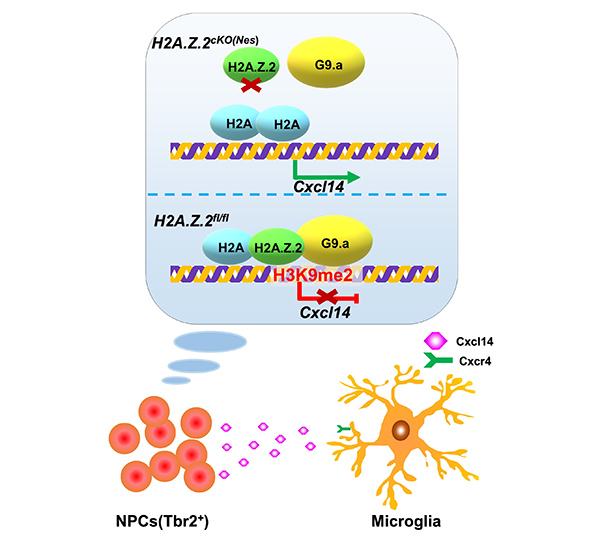Microglia, the resident immune cells of the central nervous system, play an important role in the development of brain. These important effects of microglia are related to their specific spatial and temporal distribution in the embryonic cerebral cortex, but how microglia develop in the brain during neurogenesis, and whether neural stem cells affect the development of microglia are still unclear.
Recently, Jianwei Jiao's group from the Neural Stem Cell Proliferation and Differentiation Research Group in Institute of Zoology, Chinese Academy of Sciences found that H2A. Z.2-mediated neural progenitor cells played an important role in the early development of microglia.
Related research results were published online in Proc Natl Acad Sci U S A on November 11, 2019, as a research paper entitled "Neural progenitor cells mediated by H2A.Z.2 regulate microglial development via Cxcl14 in the embryonic brain" by direct submission.
In this study, the scientists reported that the deletion of H2A.Z.2 in neural progenitor cells (NPCs) caused abnormal development of microglia in the embryonic brain.
The researchers also found that the deficiency of H2A.Z.2 in NPCs also promoted the transformation of radial glial cells into intermediate precursor cells in neural stem cells.
By RNA-seq analysis of H2A.Z.2 conditional knockout mice in NPCs, the researchers demonstrated that the chemokine Cxcl14 plays an important regulatory role in the development of microglia in the brain.
Altogether, this study demonstrates that the NPCs mediated by H2A.Z.2 play a key role in regulating the development of early microglia, broadening the understanding of the interaction between two different types of cells in the central nervous system, and provides new ideas in exploring neuroimmunology-related diseases.
The project is supported by the leading project of the Chinese Academy of Sciences, the national key R & D plan and the project of the National Natural Science Foundation of China.
Website: https://www.pnas.org/cgi/doi/10.1073/pnas.1913978116

Figure. Model of the regulation of the development of microglia in the early brain by H2A.Z.2.

